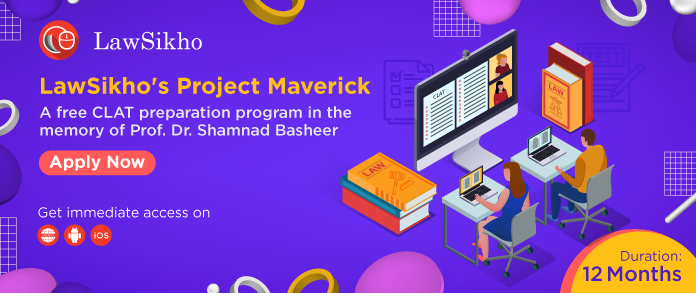This article is written by Gitika Jain, from Amity University, Kolkata. This is an exhaustive article which deals with socio-economic rights of Indian citizens.
Table of Contents
Introduction
The main point of distinction between human rights in theory and practice of human rights is minimalism. The minimalism of human rights refers to the rights having priority over other policies of the state. There are various factors that lead the human needs identified as legal rights. They are the idea of human dignity, freedom, and equality as legal rights because the very basic human needs seem to have been inconsistent with the idea of human dignity, freedom, and equality. At that time the definition of Liberty did not include the capability of individuals to be able to enjoy their freedom meaningfully. This caged conception of liberty was not only recognised by Hart but many other modern influential thinkers like John Stuart Mill and John Rawls who excluded the discussion of liberty and freedom surrounding the needs of human beings to be able to enjoy their freedom meaningfully.
Concept
The term freedom refers to define the idea of freedom that is not limited to civil and political rights but also bears in mind the capability of right-bearing individuals. When an individual is deprived of socio-economic rights, he is also deprived of the capacity to enjoy his freedom in a meaningful manner. Likewise, a starving man cannot be said to enjoy his freedom to the fullest. According to Jeff King, if we concentrate on greater amounts of happiness it would result in satisfying more and more preferences of an individual and improving the overall welfare of the country. Another aspect of socio-economic rights emphasizes the participation of citizens in political life, meaningful. This aspect of socio-economic rights mainly concentrates on the idea of freedom that includes the meaningful participation of citizens in political life for better political decision making. Human rights are basically classified into three human interests that are autonomy; the wish of people to control to some extent their own life well being, the absence of any physical suffering and full emphasis on self-respect and social participation, meaningful participation of citizens in social and communal life.
The difference of right from good and neutrality state
The notion of a fundamental right cannot be such that the state imposes its perception of good on its citizen instead it is a right of an individual to decide according to his own wish what a good life is. This notion will be considered as fundamental to liberty and it also restricts the state from trusting its values on individuals. The state must always remain neutral as regards the valid and invalid ideas of good. The state’s opinion must always be kept away from an individual’s space and allow them to choose their own conception of the good.
Meaning of social and economic rights
Human rights are divided into three generations according to international law scholarship. The first generation is referred to as civil and political right, the second is the economic, social, and cultural rights and the third is the right of people to self-determination and minority rights.
The second generation of rights that are social and economic rights are meant to address the social and economic needs of individuals and they relate to equality. All three generations are together referred to as a hierarchy of rights where the most preferable one is the first generation followed by the second and third respectively. However, there are no categories set to decide the preferred generation. There are various synonyms that club together and define social and economic rights. They are economic and social rights, social rights, welfare rights, and socio-economic rights. According to Katharine G Young, socio-economic rights include the right to have food water housing health care education and social security. The term welfare rights included in this definition includes an individual’s right to receive a pension, unemployment benefits, and other special public provisions. With respect to welfare rights, this generation is regarded to be an important second-generation right where the subject matters such as polluted water and polluted air, adequate food, adequate clothing, adequate shelter, and minimum public health care are also included. Social rights can further be classified into six different rights:-
- Moral sense:
-
- Social human rights – they are the rights that individuals are entitled to receive as a matter of public morality.
- Social citizenship rights – the social rights that go beyond minimalism social citizenship rights. These rights are quite specific and generous and may include holidays with pay, paid maternity and paternity leave, etc.
-
- Legal sense:
- International social rights – These social rights are recognised under international law. These rights also include social citizenship rights.
- Legislative social rights – These rights are written in the legislation enforceable before the courts of law.
- Constitutional social rights – These are the rides that are written in the constitution and include social Human Rights, social citizenship rights, and other relevant international social rights.
Concept of socio-economic rights at the time of the commencement of the Indian Constitution
Socio-economic rights are also called social rights to include the right of individuals to access housing, healthcare, education, food, water, social security, and other relevant basic human rights. Though the term social-economic rights have not been used in any place in the constitution of India but if we consider the factors that are required to form the socio-economic rights it can be traced in part IV of the Constitution of India as Directive Principles of State Policy.
DPSPs are not recognised as rights that are enforceable in the court of law therefore there are serious doubts about the fundamental status of social-economic rights in the constitution of India. DPSPs can be termed as fundamental principles in the governance of the country and are necessary for the state to be applied while making any laws for the country. Directive Principle of State Policy, therefore, can be called as the policy goals for executive and legislature that are helpful in framing the laws for the country. These fundamental principles are embodied in part IV of the Constitution from Article 37 to 51. The provisions in these articles include areas of governance like securing and protecting a social order, mitigating inequality among different groups of people, distribution of wealth, ensuring adequate means of livelihood to individuals, ensuring the principle of equal pay for equal work, looking upon on the health of workers, the freedom and dignity of children and the youth, providing free Legal aid, concentrating on topics such as the right to education, right to public assistance in case of disablement for old age, proper working conditions, proper relief provided in the period of maternity, a proper living wage for the workers, uniform civil code for the citizens, promoting education for the backward section of the society, ensuring the standard of living and improving the public health, promoting international peace and security, protecting and improving the environment and safeguarding the forest, protecting the monuments of national importance, etc. There are two articles in DPSP that use the term ‘right’.
Article 39(a] provides that the state should frame policy in order to secure men and women equal rights and means of livelihood, and
Article 41 provides that the state should make effective provisions to secure the right to work to education and public assistance in case of sickness, disablement, old age, and unemployment, staying within the limits of its economic capacity.
Article 37 contains the provisions that are not enforceable in a court of law. However, it is clear from the language of the provisions that the term right used in the above two articles is not meant to be legal rights or legal entitlement. When it comes to fundamental principles the term right cannot be used in that sense and is not preferred by the framers of the constitution. Therefore the rights mentioned under Article 37 and 41 or recognised as political rights. The terms right to education is also referred to in the provision of other articles like Article 45 and 46. Talking about education it has been discussed in the Constitution that it should provide free and compulsory education for all children unless and until they have attained the age of 14 years. This is something that is more than a mere political right.
The goal of socio-economic rights
Before jumping into the goals of social-economic rights, it is important to discuss various landmark judgements. In the case of Francis Coralie Mullin v. Union Territory of Delhi, the Supreme Court of India extended the scope of Article 21 and included the right to human dignity excluding mere human existence from Article 21. The court held that the right to live includes a dignified life that also includes the right to shelter clothing and nutrition that are the basic necessities of human life. In another case of Unnikrishnan v. State of Andhra Pradesh, an interpretative approach was followed by the Supreme Court to include the right to education in right to life, likewise in the case of People’s Union for Civil Liberties v. The Union of India right to food was included in the right to life. In Olga Tellis v. Bombay Municipal Corporation, Right to Shelter was included in the right to life. In Paschim Banga Khet Mazdoor Samity vs State of West Bengal, right to health and medical care was included in the right to life. In the Saudan Singh v. New Delhi Municipal Committee, the Supreme Court observed that the development of human rights is a stronger point as regards taking a positive decision with respect to Article 21 and including all the basic necessities of life in it. From the above judgements of the Supreme Court, it was concluded that the first generation rights are enforceable rights and the second generation rights took a little time to be enforced. The goal of second-generation rights was to ensure the well-being, autonomy, and social participation of human beings.
Conclusion
From all the above discussions inferences can be made that despite the existence of basic standards of living with basic human rights, the need to recognise those rights as a fundamental principle in the governance of a country is important. The basic standards of dignity, freedom, social, citizenship, and utilitarianism provide for a sound ground to basic human rights. However, there is no doubt that the second generation rights are something more than your basic human needs, and recognising those basic needs are important in today’s generation. The constitution of India does not expressly provide for socio-economic rights as the fundamental rights but they are a part of the Directive Principles of State Policy which uses the expression right and which concludingly means that they are important and mandatory for the state to be taken into consideration while framing laws for the country. Articles like 21, 39(a), 41, 45, and 37 are some of the examples of these kinds of rights. Thus, an approach to be indifferent towards the obligations that are contained in the directive principles of the state policy and considering them to be fundamental in the governance of the country have resulted in the courts to take an active stand for the rights mentioned in DPSPs. This approach has reoriented the basic human needs into justiciable rights which can be enforced in the court of law.
References
- https://shodhganga.inflibnet.ac.in/bitstream/10603/200689/5/05_chapter%20ii.pdf
- https://voelkerrechtsblog.org/access-to-justice-for-socio-economic-rights-lessons-from-the-indian-experience/#:~:text=Socio%2Deconomic%20rights%20in%20the, Ar ti cle %2021%20of%20the%20Constitution.
- https://www.ssrn.com/abstract=2189277
- http://constitutionnet.org/sites/default/files/social_and_economic_rights_0.pdf
- http://www.iconnectblog.com/2013/04/socioeconomic-rights-and-constitutional-legitimacy-in-india/
- http://legalaffairs.gov.in/sites/default/files/IV.CONSTITUTIONAL%20PROVISIONS%20FOR%20SOCIO-ECONOMIC%20CHANGE%20FUNDAMENTAL%20RIGHTS%20AND%20DIRECTIVE%20PRINCIPLES%20OF%20STATE%20POLICY.pdf
- https://docs.escr-net.org/usr_doc/kothari_article2.doc
- http://dspace.jgu.edu.in:8080/jspui/bitstream/10739/1088/1/Socioeconomic%20Rights%20in%20the%20Indian%20Constitution_%20%20Toward%20A%20Broade.pdf
- https://www.jstor.org/stable/43239539
- https://shodhganga.inflibnet.ac.in/jspui/bitstream/10603/132527/12/12_chapter%205.pdf
LawSikho has created a telegram group for exchanging legal knowledge, referrals and various opportunities. You can click on this link and join:
 Serato DJ Crack 2025Serato DJ PRO Crack
Serato DJ Crack 2025Serato DJ PRO Crack











 Allow notifications
Allow notifications



